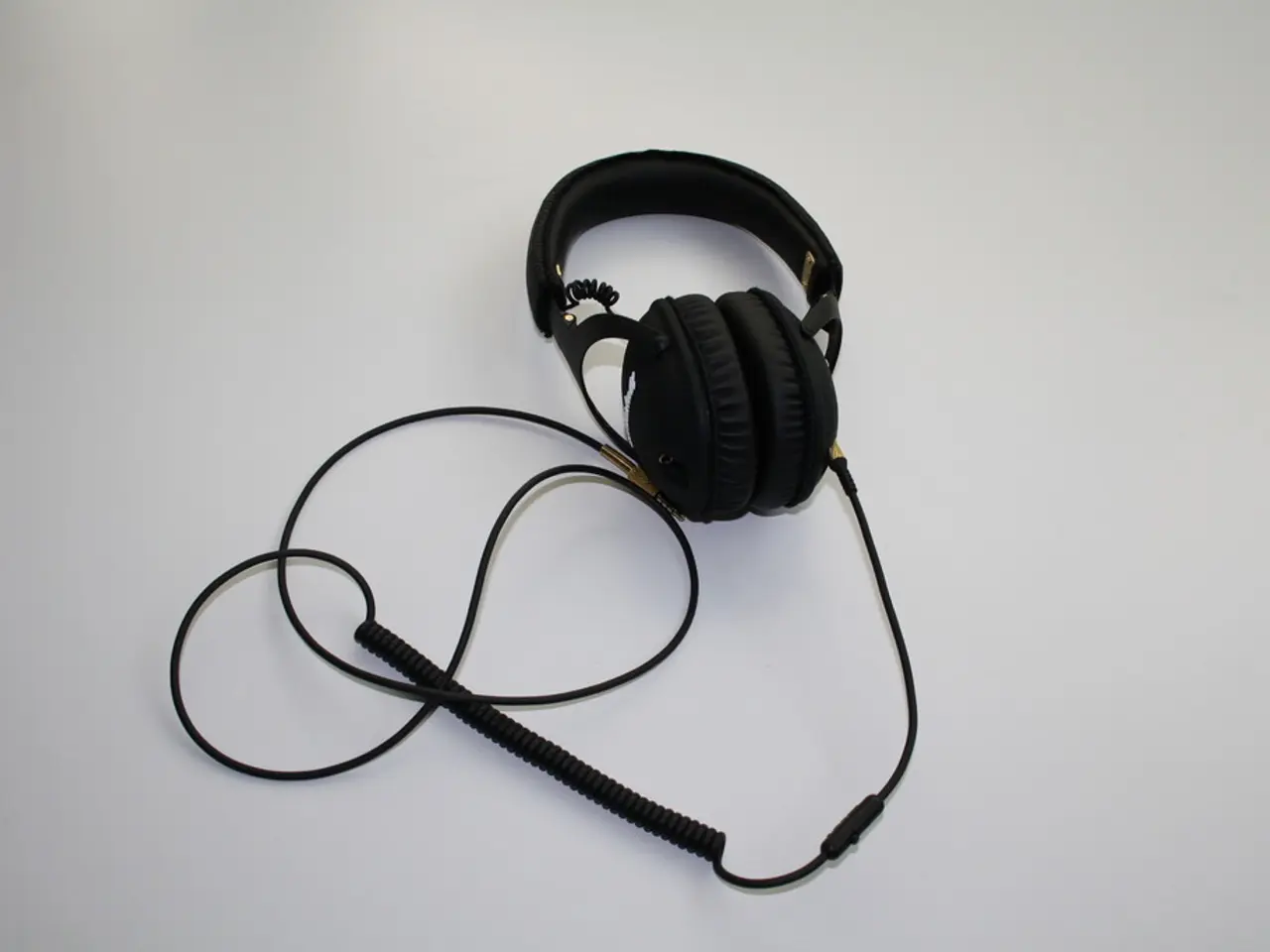Review of AVID WonderEars AP-400 Education Headset by Edtech
The AVID WonderEars AP-400 Headset is a versatile and affordable solution for elementary school educators, designed specifically for young learners aged 4-9. This headset is available in vibrant orange or green, and both the 3.5mm TRRS and USB-C models are readily available.
Design and Comfort
The AVID WonderEars AP-400 Headset boasts a soft-on-ear design and headband padding, ensuring comfort for long periods of use. Its sturdy moulded end connections and integrated velcro strap add to its durability, making it a reliable choice for young learners.
Key Features
- Braided 5-foot cord: The AVID WonderEars AP-400 Headset comes with a braided 5-foot cord for added durability.
- KidCom microphone: The headset features a KidCom microphone, which stands off the unit less than an inch for optimal voice pickup.
- Volume limitation: The product is designed with a volume limitation to limit the volume setting to 85 dB, ensuring safe listening levels for young users.
- Affordable pricing: The AVID WonderEars AP-400 Headsets are priced affordably, making them a cost-effective solution for schools and educators.
- Versatile connectivity: The headsets are suitable for both Chromebook and PC devices, with both USB-C and 3.5mm TRRS connections available.
Connection Types: 3.5mm TRRS vs USB-C
The key differences between the 3.5mm TRRS and USB-C versions of the AVID WonderEars AP-400 Headset lie in their recording properties.
3.5mm TRRS Version
- Analog audio connection: The 3.5mm TRRS version uses the standard 3.5mm TRRS jack for analog audio signals.
- Recording quality: The quality of recording depends on the device’s built-in sound card.
- Compatibility: The connection is widely compatible with most smartphones, tablets, and laptops with a 3.5mm combo audio jack.
USB-C Version
- Digital audio connection: The USB-C version uses USB-C for digital audio signals.
- Recording quality: The headset includes its own audio interface and ADC, ensuring consistent and potentially higher-quality digital recording.
- Compatibility: The connection requires a device that supports USB-C audio input, more common in modern smartphones, tablets, and PCs.
Comparison Table
| Feature | 3.5mm TRRS Version | USB-C Version | |--------------------------|-------------------------------------|-------------------------------------| | Connection type | Analog (3.5mm TRRS jack) | Digital (USB-C port) | | Audio conversion | Device-dependent | Built-in ADC and DAC in headset | | Recording quality | Varies with device hardware | More consistent, typically higher | | Noise/interference | More susceptible | Better noise rejection | | Latency | Very low | Low, but slightly higher than analog| | Device compatibility | Nearly universal | Requires USB-C audio support |
Recording Properties
While the 3.5mm TRRS connection offers good recording properties, the USB-C version generally provides more consistent and reliable sound quality due to onboard digital processing. If your primary concern is consistent, high-quality recording with minimal interference, the USB-C version is the better choice. The 3.5mm TRRS version offers broader compatibility but relies on the host device’s audio hardware quality.
The AVID WonderEars AP-400 Headset is a well-built unit that delivers great audio in a small form factor, making it an ideal choice for young learners. With its affordable pricing, durability, and versatile connectivity options, the AVID WonderEars AP-400 Headset is a valuable tool for educators looking to enhance their students' learning experience.
The AVID WonderEars AP-400 Headset, designed for elementary school students, not only offers comfort for long hours of learning but also features affordable pricing, making it a cost-effective gadget for education-and-self-development. This versatile technology, suitable for Chromebook and PC devices, aids in online education, enhancing the learning experience for young learners. With its durable construction and reliable connectivity, it serves as an essential tool for educators looking to facilitate learning. When connecting, the 3.5mm TRRS version offers broader compatibility, while the USB-C version delivers more consistent recording quality with minimal interference, making it ideal for educational environments focused on education-and-self-development and online education.




